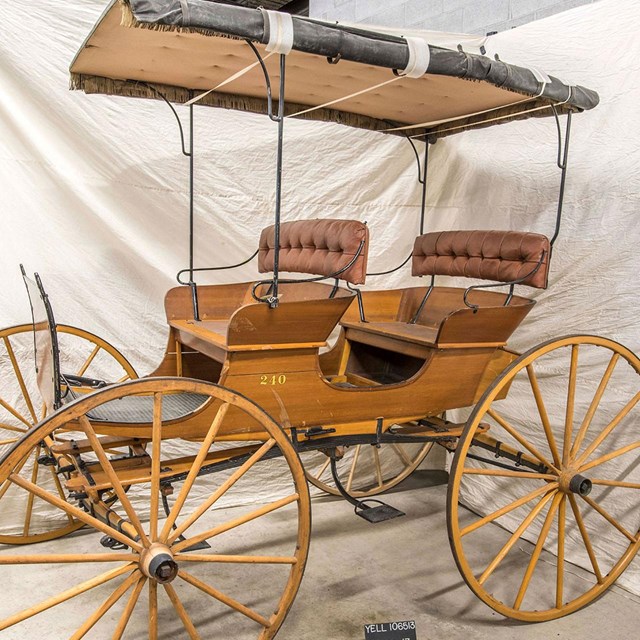Although Congress declared Yellowstone a national park, it did not provide funding for infrastructure and maintenance. The park’s first superintendent, Nathaniel P. Langford struggled to create the necessary systems to allow tourists to access Yellowstone. Philetus W. Norris became the next superintendent in 1877. Having received funding from Congress to “protect, preserve, and improve the Park,” Norris conducted map surveys and designed roads and trails to improve visitor experience. In 1883, Army Engineer Captain Dan C. Kingsman continued Norris’ work on the road now known as the Grand Loop. This road connects Mammoth Hot Springs, the Norris Geyser Basin, the Firehole Geyser Basin, Yellowstone Lake, the Grand Canyon of the Yellowstone River, and Tower Falls. In 1891, Army Engineer Major Hiram C. Chittenden began a nine-year road construction project to complete the Grand Loop. His layout emphasized Yellowstone’s natural beauty, rather than the shortest possible connections between points of interest. By 1906, the first iteration of the Grand Loop was complete, making wagon access to the park much easier for visitors and park administrators. Horse-drawn wagons and stagecoaches were able to use the Grand Loop with few discomforts. After automobiles were allowed in Yellowstone in 1915, flaws in its roadways became apparent as potholes wreaked havoc on tires and dust covered windshields.
In 1926, the Rockefeller family sponsored a roadside cleanup effort, and with it came an ambitious plan to update park roads. President Franklin D. Roosevelt’s government relief programs made additional funding available during the Great Depression. Civilian Conservation Corps (CCC) laborers began working on park infrastructure projects in 1933. Focusing on the Grand Loop and the park’s entrance highways, CCC workers expanded roads to be 28 feet wide, painted center stripes on roads, and constructed bridges. During this period, much of the park’s 347-mile road system was improved to meet national highway standards. Laborers coated 155 miles of Yellowstone’s roads in asphalt, removed potholes and tarred roads to remove dust over 96 miles, and constructed 30 bridges. By the end of the project, only 100 miles of road still needed improvement. The days of Yellowstone’s dusty, muddy, and dangerous dirt roads were over.
-
 Map of Yellowstone
Map of YellowstoneYellowstone National Park, YELL 23004
-
 Philetus W. Norris
Philetus W. NorrisYellowstone National Park, YELL 6338
-
 Hiram M Chittenden
Hiram M ChittendenYellowstone National Park, YELL 601
-
 Mining Tripod
Mining TripodYellowstone National Park, YELL 23027
-
 Surrey
SurreyYellowstone National Park, YELL 106513
-
 Maintenance of Golden Gate Road
Maintenance of Golden Gate RoadYellowstone National Park, YELL 35895
-
 Leaving Camp for Projects
Leaving Camp for ProjectsYellowstone National Park, YELL 32246
-
 Headlamp
HeadlampYellowstone National Park, YELL 85004
-
 License Plate
License PlateYellowstone National Park, YELL 681
Last updated: November 4, 2024

